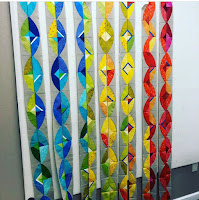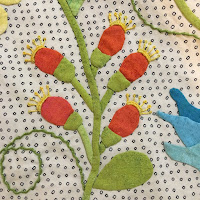Are you ready? If not, that's OK. It's never too late to start.
I'm SO excited about the success of the Facebook group! I feel like this will be a wonderful place to share, ask questions, and stay motivated and on track.
Today's question:
Where do I find recent weather data?
I recommended the NOAA website for historical data for planning purposes because it allows you to download spreadsheets. It won't, however, really work easily for more recent temperatures.
In 2019 I used Weather Underground but in 2020 I found weather.com, which is The Weather Channel's page and it has worked really well.
You can see a whole month's minimum and maximum temperatures in one, as well as precipitation and even whether it was sunny or cloudy.
Here's December 2019 for Des Moines:
How do I get here?
Go to weather.com and enter your city into the search box at the top of the page.
Or...join the Facebook group or follow #tempquiltalong on Instagram.

%20%20copy.jpg)


























































